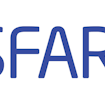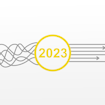
In November, the Simons Foundation Autism Research Initiative (SFARI) launched a request for applications (RFA), calling for letters of intent (LOIs) from individuals who will conduct bold, imaginative and rigorous research relevant to our mission. Applicants received notice from us in late February indicating whether we will consider a full application. Here, in an attempt to demystify the grant-making process, I’ll give readers a behind-the-scenes look at how SFARI’s science team makes decisions.
What's happened so far?
In response to the call for LOIs, we received 381 applications covering many topics in autism research — ranging broadly from gene sequencing to computer-based therapeutic interventions and, seemingly, everything in between. The internal science team divided the applications amongst ourselves, with each application being read by at least two members of the group, but often more. There are seven members in the team: scientific director Gerry Fischbach, executive vice president Dennis Choi, deputy director for life sciences Marian Carlson, director of bioinformatics Steve Johnson, myself, and associate directors for research Marta Benedetti, Alan Packer and Prashanth Ak.
In the past, we sent LOIs to an external review board as well. But given the size of our science team, we felt that we had the appropriate expertise and bandwidth to make this first-level decision in house — and that by doing so we could streamline the process.
At this stage, we were reading grants primarily with an eye toward whether they are in line with SFARI’s mission — which is “to improve the diagnosis and treatment of autism spectrum disorders by driving, catalyzing and funding research of the greatest quality and relevance” — and whether and how they fit in with our existing portfolio of awards from previous RFAs. We discussed the LOIs in a series of internal meetings.
Tough decisions, priorities:
The vast majority of LOIs described interesting work. It would be great if SFARI could fund all of them, but that’s simply not possible: together, the requests totaled $310,100,000.
We had to make a lot of tough choices about which grants to invite to full application. We generally like to give principal investigators (PIs) the benefit of the doubt because we know it can be challenging to describe work in three pages. Then again, if we feel an application is not likely to be competitive for one reason or another, we prefer to tell PIs at this early stage, rather than at a later stage when they have invested much more effort.
Although our decisions at this point were mostly binary (either yes or no to a full application), we did advise many applicants to consider submitting more streamlined full proposals, such as reducing a request for an individual award to a pilot grant if the proposed experiments and potential risk seemed more appropriate for that category.
How we interpret which applications will lead to work that best supports SFARI’s mission is of course a nuanced and evolving story. But there are a few general guidelines that have emerged from previous RFA review panels, and from multiple internal and external discussions, that influence our decisions:
Defining the genetic landscape:
We already support a number of large-scale efforts aimed at understanding the landscape of autism genetics using the Simons Simplex Collection (SSC) cohort. Among others, these include analyses of copy number variations (CNVs) and several projects using whole-exome and whole-genome sequencing. Given this extensive investment in the SSC and the informatics platform to support it, we tend to rank CNV or sequencing efforts in other autism cohorts less favorably, unless there is a compelling reason to use another group of subjects.
Which mouse?
We received a large number of applications that proposed to use rodent models to explore molecular mechanisms underlying autism spectrum disorders (ASD). We had LOIs that planned to use mice with apparent face validity: the mice exhibit behaviors, such as repetitive movements, that resemble those seen in people with ASD. Others have construct validity, based on epidemiological evidence, such as rats treated with sodium valproate, an antiepileptic drug; children born to women who take VPA during pregnancy have a higher risk of ASD.
We favored LOIs using mouse models based on solid human genetic evidence, such as mice carrying a 16p11.2 deletion, a recurrent genetic event that has been rigorously identified in ASD cohorts. A modest number of such recurrent genetic events have been identified, and we believe that there is great potential for synergy between human and rodent work if the research community focuses efforts on a common set of rodent models. That way, data about behavior and physiology can be more readily integrated to form a cohesive picture.
Where’s the cohort?
We received a number of applications proposing clever new ways of measuring various behavioral, psychophysical or neuroimaging parameters in people with ASD. The trouble is, the first step for many of these investigators was assembling a study cohort. We’ve learned from previous grants that recruitment and retention is far more difficult and costly than many researchers anticipate. So, unless there was a hugely compelling reason for a new cohort, we recommended instead that the researchers team up with existing research groups that already have a study group. We’re big fans of well-organized cohorts, such as the SSC, in which multiple types of data (phenotype, genetic, neuroimaging, etc.) can be layered on top of one another and, importantly, shared with the broad community of researchers.
One more thought on cohorts: Genetic discovery is moving fast — and the potential for connecting genotype with phenotype seems especially promising. So our view is that it is no longer sensible to study individuals with ASD without knowing something about their genotype, or at a minimum having their blood in the freezer for future analysis.
Returning SFARI investigators and new investigators:
We received a number of continuation applications from current SFARI investigators. Moving forward, we will reduce priority for continuation grants to established investigators unless there are major new discoveries or directions, in order to support early-stage funding more aggressively, and also to free up money for new projects (more on these below). We’ve always been enthusiastic about bringing in investigators to autism who have a strong track record in another research area, and can offer a fresh approach to an existing problem. (As an aside, we’re always looking for new ways to broadcast our RFAs to investigators who may not already know about SFARI.)
Relevance to autism and reaching out to translation:
The issues in ASD research are complex, and deciding which projects are truly relevant to our mission is perhaps one of our greatest challenges. In the extreme, one could argue that autism is a result of altered brain function, so any project that aims to understand the brain better — especially a brain system whose function has been linked to ASD — should be relevant. But SFARI’s funding is finite and to fulfill our mission we need to maintain a tighter focus. Our grant program will favor work that is highly relevant to autism — thus providing a link between essential basic research and potential therapeutic interventions.
Data sharing and portfolio balance:
In the RFA, we advise applicants to familiarize themselves with the work currently supported by SFARI, and to think about how their proposals might complement existing grants. We also expect SFARI investigators to have a plan for how to share renewable reagents and data developed using SFARI funds with other qualified investigators.
We take both of these requests seriously in the review process.
Full proposal review:
What are the next steps?
The 110 full proposals that we invited arrived on 4 April and will be reviewed in an expeditious manner.
Electronic and in-person review:
Our referee board is made up of a diverse group of scientists, and we’ve added several new members this year. As in the past few years, we’ve included a subset of current SFARI investigators.
We plan to hold a lively two-day meeting in early June. At that meeting, referees will present grant proposals, and all of us together will debate strengths and weakness and, eventually, score each proposal. Conceptually related proposals are discussed in groups so that we can make direct comparisons. But we don’t discuss all applications: to keep the meeting manageable, proposals that score poorly in the electronic pre-review are rejected without full discussion.
Unlike some funders, we don’t divide the committee into subgroups by expertise; all members are present for discussion of all proposals — except, of course, when there are potential conflicts of interest. This approach may be less efficient than that of a specialized subcommittee, but the upside is that it offers a check against overspecialization unduly influencing decisions. And a broad view of the variety of approaches brought to the question of autism makes for a very interesting meeting.
The referees and SFARI staff both have substantial flexibility in suggesting changes to the scope or budget of a grant application. It is not uncommon that the board enthusiastically endorses the first and second aims of a proposal, for example, but is less enthusiastic about a third aim. In such a case, we would recommend that the third aim be cut and the budget reduced appropriately.
We’re often asked how many grants we plan to fund. In previous years, the number has been around 20 new proposals per RFA cycle, but the final number is highly dependent on the size of the grants: If we get a number of strong smaller pilot grant proposals, we may fund considerably more; if we have especially strong but costly project proposals, the number could be fewer.
Scientific advisory board:
About one month after the review meeting, the SFARI science team presents our recommendations to the scientific advisory board. The board’s role is to help judge consistency of the review process, and to ensure a balance of the overall portfolio in line with SFARI’s mission.
Budget discussions:
Once the decisions are approved by the scientific advisory board and the Simons Foundation Board of Trustees, the SFARI science team communicates the decisions to all PIs. We try to give PIs whom we do not fund a summary of the thinking that went into the decision. We often work closely with new awardees to adjust budgets and scientific aims in line with feedback during the review. Funding start dates are 1 August or soon thereafter.
Bigger is not always better:
In addition to what has become our yearly RFA cycle, SFARI is about to launch a new program of SFARI Explorer Awards. Applications will be considered on a rolling basis, with a response time as short as 30 days. Detailed information about this program will be available on SFARI.org within a month.
Briefly, these awards are intended to provide resources to support exploratory experiments that will strengthen hypotheses and lead to the formulation of competitive applications for subsequent larger-scale funding by SFARI or other organizations. Innovative, high-risk and high-impact proposals are encouraged. The awards are on a one-time basis, not to exceed $50,000. It is quite possible that some proposals that we are not able to fund in the regular RFA will be appropriate for this new funding mechanism. SFARI is also considering other funding mechanisms for postdoctoral fellows and others. More on this in a subsequent column.
Feedback:
SFARI always welcomes feedback about our decision-making process. The more specific the feedback, the better. “I can’t believe you didn’t fund my grant; you guys make lousy decisions,” is far less helpful than a reasoned critique of some of the criteria that I have outlined above.
Also, please keep in mind that a negative decision on this round is not a broader decision about the quality of work emerging from a lab, or a blanket statement about the potential for future SFARI funding. It’s simply that the abundance of high-quality grants and a finite budget force us to make tough decisions.
John Spiro is senior associate director for research at SFARI.


